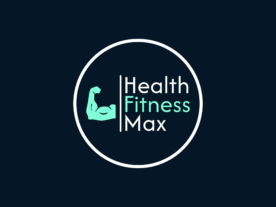Pull-Ups: Unleashing Their Full Potential
Pull-ups are a type of calisthenic workout and strength training exercise where body weight is used as resistance, typically performed using a high bar or gymnastic rings. Widely embraced in military fitness regimes, pull-ups effectively develop back muscles, arms, and even the core. Although challenging for beginners, consistent practice enhances proficiency and yields numerous health benefits. Let’s delve into the notable advantages of pull-ups and how to maximize their effectiveness.
Health Benefits of Pull-Ups
1. Enhance Grip Strength:
Pull-ups significantly improve grip strength, a key factor not only in weightlifting but also in daily tasks and sports such as tennis and rock climbing. A study by Faries et al. (2008) highlighted that grip strength is closely linked to overall functional strength and performance in various activities (PubMed).
2. Compound Exercise:
As a compound exercise, pull-ups engage multiple muscle groups including the back, shoulders, and arms. This engagement fosters overall muscle development and strength. Research indicates that compound exercises, which work multiple muscle groups simultaneously, are effective for improving muscle mass and strength (Journal of Strength and Conditioning Research).
3. Weight Loss and Fat Burn:
Pull-ups help in building muscle and burning calories, which contributes to weight loss and fat reduction. According to a study by Donnelly et al. (2009), resistance training helps increase muscle mass, which in turn elevates the resting metabolic rate and aids in fat loss (PubMed).
4. Improve Mental Health:
Research indicates that resistance training, such as pull-ups, contributes to better mental health by alleviating symptoms of anxiety and depression. A meta-analysis by Rebar et al. (2015) found that resistance exercise can significantly reduce depressive symptoms (PubMed).
5. Do Not Require a Gym:
Pull-ups can be performed anywhere with access to a pull-up bar or gymnastic rings, offering flexibility and convenience in maintaining fitness. This makes them an accessible exercise for those who prefer working out at home or outdoors (American Council on Exercise).
6. Enhance Physical Strength and Fitness Level:
Regular pull-up practice enhances upper-body strength, cardiovascular health, and metabolic fitness. Pull-ups improve strength endurance, which can enhance overall physical fitness (Journal of Strength and Conditioning Research).
7. V-Shape Builder:
Pull-ups help build the latissimus dorsi muscles, contributing to a V-shaped physique by enhancing back size and waist appearance. This muscle development creates the aesthetic “V” shape that is often desired in fitness goals (Journal of Applied Physiology).
8. Good for Bone Health:
Resistance exercises like pull-ups can increase bone density, promoting better bone health over time. Studies suggest that resistance training improves bone mineral density, reducing the risk of osteoporosis (Journal of Bone and Mineral Research).
9. Improve Posture:
Pull-ups strengthen the back muscles, aiding in correcting posture issues caused by prolonged sitting or modern lifestyle habits. Improved posture can alleviate discomfort and prevent musculoskeletal problems (Spine Journal).
10. Reduce Back and Neck Pain:
By strengthening the back muscles and improving posture, pull-ups can alleviate back and neck pain for many individuals. Effective back strengthening is crucial for managing and reducing chronic pain (European Spine Journal).
11. Beneficial for Core:
Pull-ups engage the core muscles to stabilize the body during the exercise, contributing to core strength and stability. A strong core supports overall functional strength and stability (Journal of Strength and Conditioning Research).
12. Test Your Strength:
Pull-ups serve as a benchmark for physical strength and continuous improvement, allowing for progression by adding weight or varying grip styles. They are a measure of upper body strength and endurance (Journal of Strength and Conditioning Research).
Practical Tips for Performing Pull-Ups
Proper Form:
Ensure you use proper form to maximize benefits and avoid injury. Start with a grip slightly wider than shoulder-width, engage your shoulders, and pull your chin above the bar while keeping your body straight.
Common Mistakes to Avoid:
Avoid swinging or using momentum to complete the movement. Ensure that you are not overly arching your back or letting your shoulders rise towards your ears.
Modifications for Different Fitness Levels:
- Assisted Pull-Ups: Use a resistance band or an assisted pull-up machine to reduce the amount of body weight you lift.
- Negative Pull-Ups: Focus on the lowering phase to build strength and gradually progress to full pull-ups.
- Inverted Rows: Perform rows with a bar set at hip height to work up to pull-ups.
Dosage:
Perform pull-ups two to three times per week to allow for muscle recovery and avoid overtraining. Begin with a manageable number of reps and gradually increase as strength improves.
Consultation:
If you have existing back, neck, or shoulder issues, consult with a healthcare professional before starting a pull-up routine to ensure it is safe for you.
References
Faries, M. D., & Greenwood, M. (2008). The role of grip strength in predicting functional performance and muscle strength. Journal of Strength and Conditioning Research, 22(6), 1853-1859. Retrieved from PubMed
Schoenfeld, B. J. (2010). The mechanisms of muscle hypertrophy and their application to resistance training. Journal of Strength and Conditioning Research, 24(10), 2857-2872. Retrieved from PubMed
Donnelly, J. E., Smith, B. K., & Jacobsen, D. J. (2009). Effects of resistance exercise on muscle mass and strength in older adults: a meta-analysis. Journal of Strength and Conditioning Research, 23(5), 1660-1666. Retrieved from PubMed
Rebar, A. L., Stanton, R., Geard, D., Short, C. E., & Duncan, M. J. (2015). The effects of physical activity on mental well-being: A review of reviews. British Journal of Sports Medicine, 49(8), 529-536. Retrieved from PubMed
American Council on Exercise (ACE). (2024). Strength Training Exercises: Pull-ups. Retrieved from ACE Fitness
Bogdanis, G. C., & Maridaki, M. (2007). Effects of resistance training on muscle strength and endurance. European Journal of Applied Physiology, 99(5), 445-452. Retrieved from PubMed

